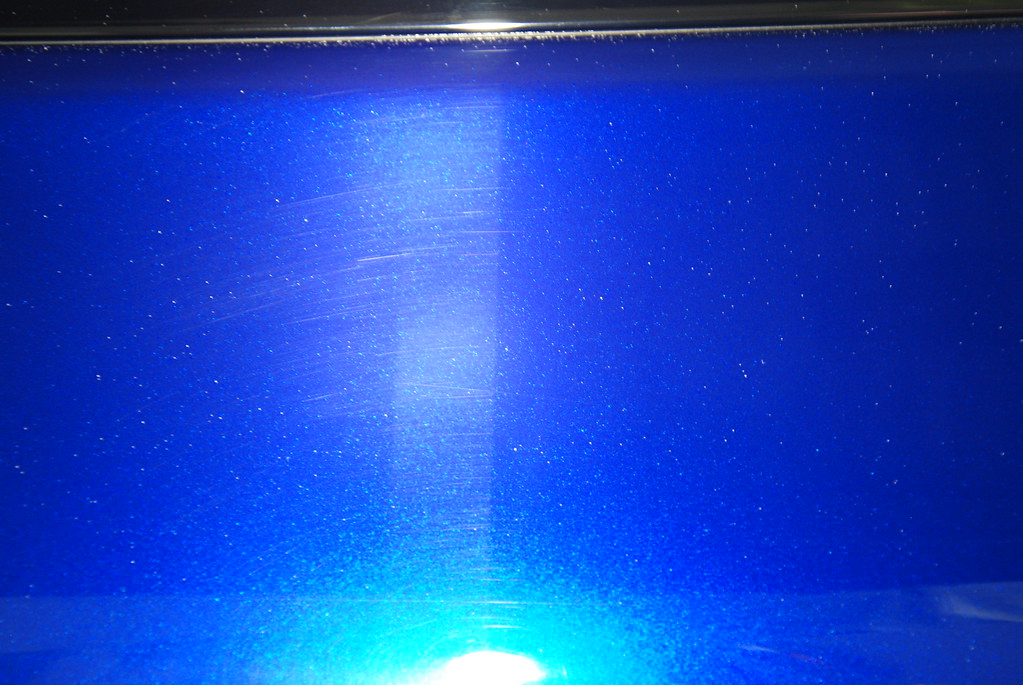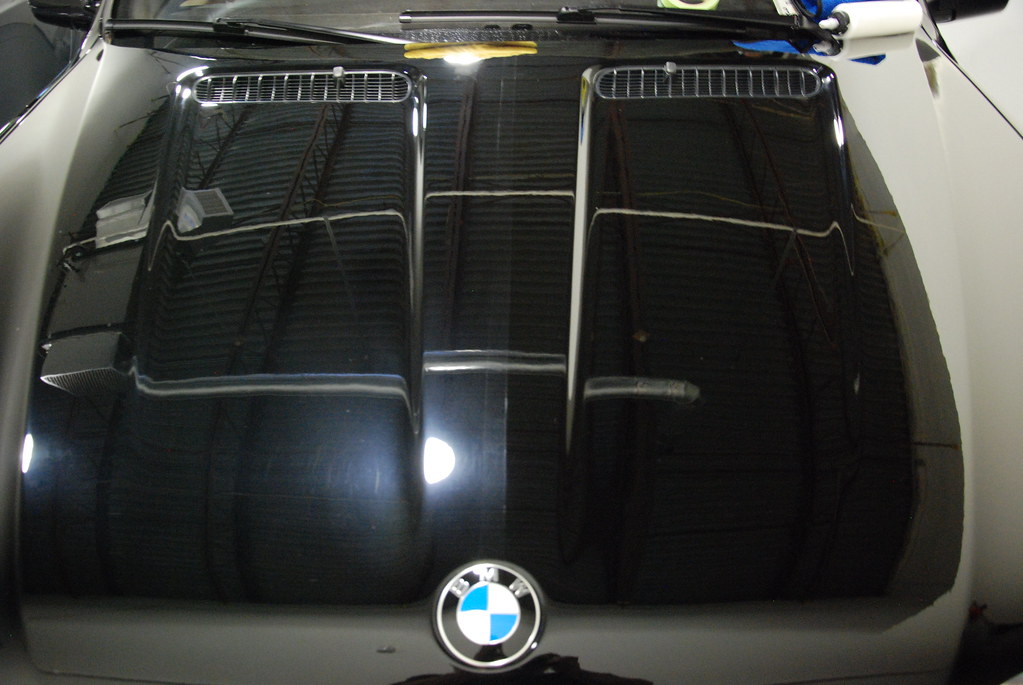Game Changer: RUPES Polishers!
by Greg GellasThe Rupes Big Foot Random Orbital Polishers are the perfect buffer for any detailing enthusiast or professional! They offer an incredible balance of power, safety and performance that everyone can benefit from. The random orbital movement of these buffers allows you to achieve professional polishing results in less overall polishing time. What previously may have taken several sets of passes can now be done in just one to two sets of passes. The 500 W Rupes motor is powerful enough that you will never have to worry about bogging down when correcting heavier imperfections, swirls, scratches, etc. Even with the powerful motor this buffer is extremely easy to use. Beginners will be able to pick up this buffer, feel comfortable and achieve significant correction if desired. This immediate comfort comes from three important safety features: soft start, anti-spinning feature, and electronic feedback control. The soft start feature will guarantee a soft acceleration when you squeeze the trigger, while the electronic feedback control will maintain a constant speed while polishing. Once you reach higher speeds the anti-spinning feature will help prevent holograms and burning that can come from high speed buffer rotations. Another great feature of these buffers is that the backing plates come built in and feels solid, so it will never come flying off! All these features means it is incredibly safe and easy to use, but experienced professional detailers will also love this unit. It has the perfect blend of safety and speed that allows you to polish incredibly fast while leaving minimal haze. If you are looking for the perfect buffer for your detailing work, check out the Rupes LHR15 and LHR21 Big Foot Random Orbital Polishers!
If you haven’t heard of the Rupes polishers yet then you should read onward! They have changed the detailing world forever; Offering two versions, the Rupes LHR21 and the Rupes LHR15.
The large offset throw is what makes these machines so amazing. The model numbers reference the “throw” or “stroke” of the offset, one having a 21mm throw and the other a 15mm. Each model offers benefits, I am going to go through what is amazing about each machine, but first let’s answer some questions.
Why is it only 500watts? Unlike the smaller throw machines that generally get quite a bit of downward pressure, the Rupes doesn’t require that pressure. In fact, it is just about the weight of my hand when using the machine to achieve a faster correction rate. There isn’t a need for more power as the additional throw is already moving the pad faster than a smaller throw machine. This additional area and faster rotation coupled with slow arm movement make for an amazing correction rate.
So why would I ever use a smaller throw machine? Due to the large throw of the Rupes machines, they will be difficult to use in tight areas and can “stall” when used on curvy or tight areas. Additionally, they are less forgiving if you try to tilt the machine to get into a tighter area, where as a smaller throw machine is more likely to continue to spin and not stall with the same amount of tilt. A smaller throw machine is better at tight areas using a sawing type action.
Let’s begin with the Rupes LHR21. With a massive 21mm throw it is a defect killing machine. It is amazing on large flat panels, hoods, doors and trunk lids. One area the Rupes does not like is curves or tight areas. That is the only downfall for the LHR21. Otherwise with M105 and a MF Pad this machine gets some amazing correction in a very fast amount of time. Just because it corrects faster doesn’t mean arm speed should be quickened, slow arm movement is still needed. One thing I have noticed is less heat is produced with the larger throw machines, due to the larger area, which is really a great addition to an already great machine.
The LHR15 is more forgiving, allowing it to get into tighter areas, and it doesn’t stall as easily on a curved panel. With that said, I will reach for a smaller stroke machine with a 3″ pad for A-Pillars, tight areas of the trunk, and rocker panels.
Using the Rupes LHR21 paired with a yellow pad and Sonax Perfect Finish……. This is the sort of correction you can achieve, amazing for 1 step of correction. The top edge of the door panel was then taped off and I used a 3″ machine for that area.

Here is another example of a 1 step polishing. Although the deeper marks were not removed, the haze and gray from the surface was.

While an investment, the Rupes polisher is worth its weight in gold to reduce time and achieve amazing results.
As always thanks for reading.










Great info, thanks!
Hi Gregory
If you could advice that would be much appreciated. I have BMW 2008 Jet black and I have similar situation as picture 1 in your article. You suggested to use Sonax Perfect Finish with yellow pad. This is a Rupes pad or LC pad. The second question what it is your advice to use different pads, is Rupes performance gets effected.
Thanks
Moheb Hanna
Lancaster, CA
Moheb,
I was using a Rupes Yellow pad. A similar pad may be a LC White pad. It is not a problem to use other pads with the Rupes polishers. Everything from Surbuff pads, MF Pads, all the way to black LC pads can be used without issue.
Greg
Not much to say, it`s amazing machines, witch takes you skills to another level, no matter how skilled you are!
Try it, buy it and have fun!
Lars Oxholm Jensen
My next machine when my old one dies.
Thanks Greg.
I just used my rupes15 for the first time this weekend. Anytime I tried to use it on a vertical panel (car door) it wouldn’t rotate and just stalled; even with very little to no pressure on the machine. Anyone else have this problem? Is the rupes only good for flat horizontal panels?
Awesome article! I am currently using a Pc7424XP and am going to upgrade… But am undecided whether I should invest in Rupes LHR15 or Flex 3401. I have all 5.5″ pads and love using the MF pads and Menzerna polishes. I just simply want whichever with these products will have benefit of random orbital (greatly decreased risk of burning paint and swirls/holograms) and will achieve great paint correctioning for not being a rotary. Whats the suggestion? Im stumped lol
Do the Rupes tools have gear driven forced rotation like the Flex DA?
My understanding is the Rupes are not forced rotation. The Flex 3401 is forced rotation and it is amazing!
Roger – The new Rupes Mille is gear driven like the Flex 3401. The regular LHR ES and Mark II units are long throw DA units.